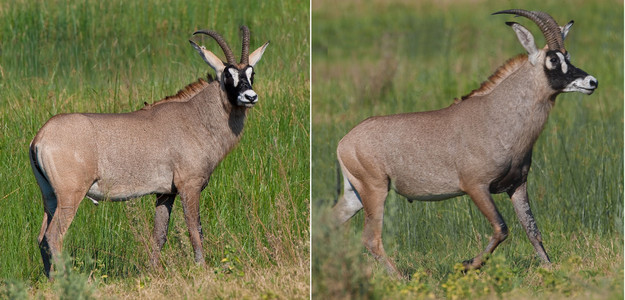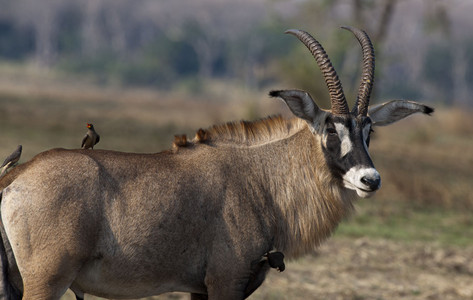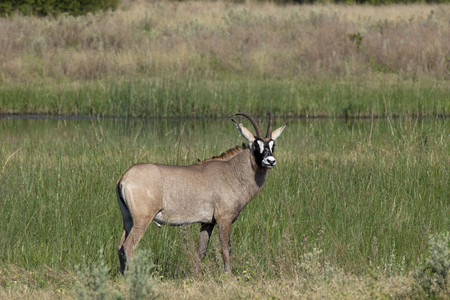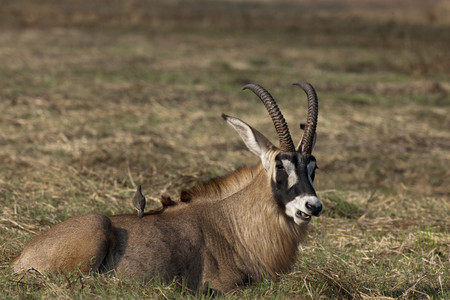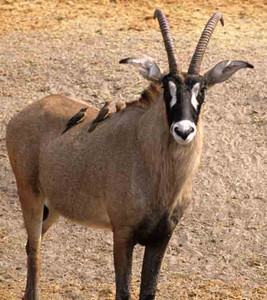
Roan Antelope
A Roan Antelope male. This species is the second largest (after Eland) african antelope & weighs about 600 lbs. It is about the size of a large horse. Both sexes bear horns, but the male's is heavier & thicker at the base. The red-billed oxpeckers are usually present, searching their host's fur for insects. [Big Tom's, Hwange NP, Zimbabwe].
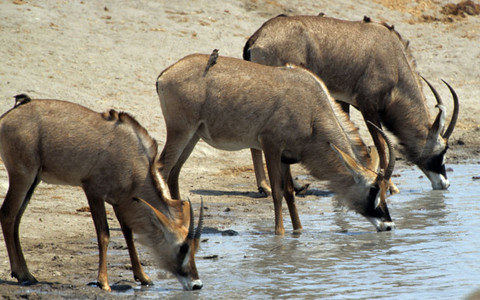
Roan Antelope
Roan Antelope: Three females, of different age, drinking. Note that the horns are thinner and smaller--especially at the base--compared to the males.[Big Tom's, Hwange NP, Zimbabwe].
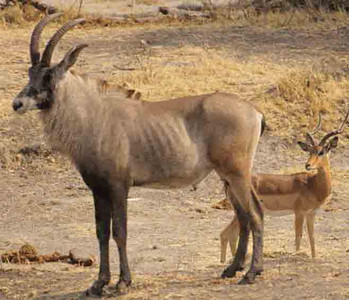
Roan Antelope
Roan Antelope: A good view of the heavier and thicker (at the base) horn on this male. An adult impala buck, standing next to & right behind him, provides a good comparison of his size. They and the Sable have a similar face-mask, and both sexes of both species bear horns. [Big Tom's, Hwange NP, Zimbabwe].
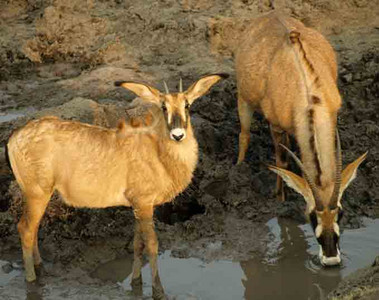
Roan Antelope
Roan Antelope: Juvenile with female. Both sexes have horns, but note how thin at the base the mother's is, compared to the male's (previous image). The 4-month (approx.) juvenile fur is characteristically a lighter shade, but will darken as the animal matures. [Big Tom's, Hwange NP, Zimbabwe].
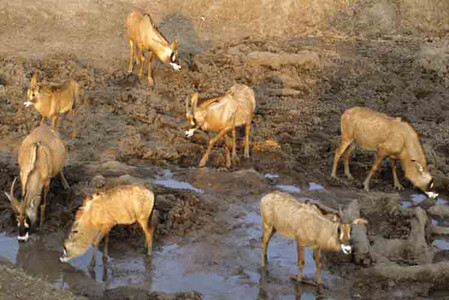
Roan Antelope
Roan Antelope group at water hole, most of which are females and juveniles--a couple look pregnant. The one standing in the background on the upper edge of the embankment (L,center) is a male--probably the dominant male. [Big Tom's, Hwange NP, Zimbabwe].
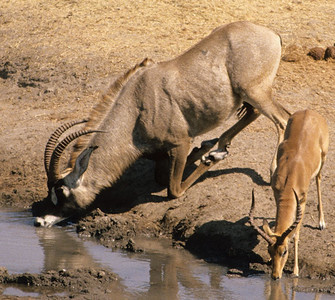
Roan Antelope
The dominant Roan Antelope male has gotten down on his knees to drink. Another good view of the horn for differentiating the sexes: this fellow's are much heavier and more curved backward & down towards his back. This is a fully mature adult male. An adult male Impala is standing beside him. [Big Tom's, Hwange NP, Zimbabwe].
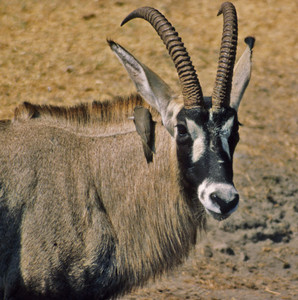
Roan Antelope Mask
This portrait of the adult Roan Antelope male beautifully demonstrates the specie's mask, white blazes between the eyes, and the white nose. A red-billed oxpecker is busy searching for an insect in the mane. [Big Tom's, Hwange NP, Zimbabwe].
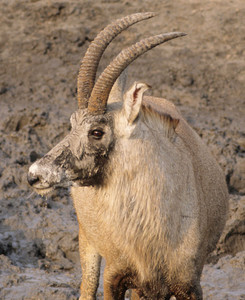
Roan Antelope
I don't know how this Roan Antelope got his face and horns so caked with mud. Perhaps, for some reason, he was using his horns to dig into some soft mud . [Musima, Hwange NP, Zimbabwe].
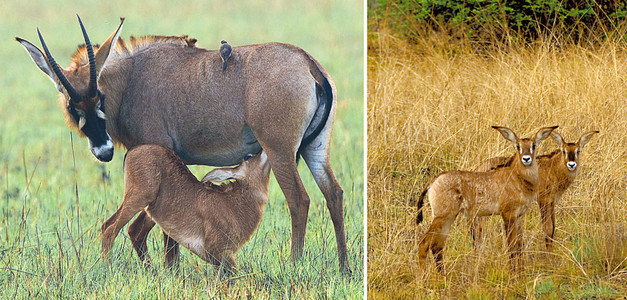
Roan Antelope Female Nursing
Roan Antelope female nursing a 6-wk.fawn (L); 2 juveniles, of about the same age, (R) (dbl image): Both of these images speak for themselves. The 2 juveniles on the right, no more than 2-3 months old, are in dangerous territory, i.e., tall grass at the edge of a woodlands: a great opportunity for a leopard. Even a couple of jackals could take down one of these youngsters. [Busanga Plains, Zambia].
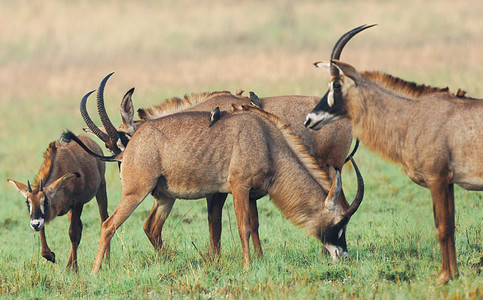
Roan Antelope
A small group of female Roan Antelopes of varying ages. Both sexes bear horns. {Busanga Palins, Zambia].
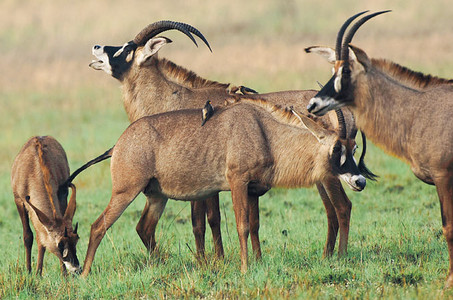
Roan Antelope
A large male roan (head lifted, mouth open, in background) with two females and a juvenile. The male is exhibiting flehman--a reponse to his scenting one of the females entering estrus. Note that the adult female (rt-center) is leaning and rubbng her body against the male. [Busanga Plains, Zmabia].
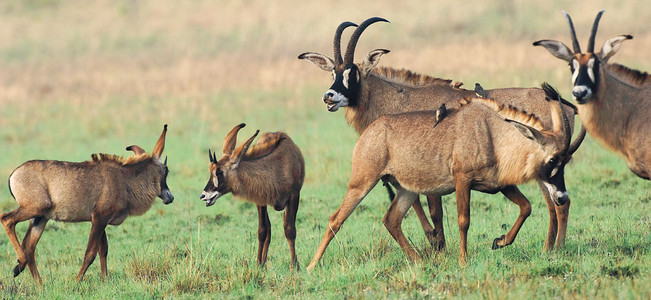
Roan Antelope
A male roan barking some orders to two of his females, and probably to the two juveniles in front of him. [Busanga Plains, Zambia].
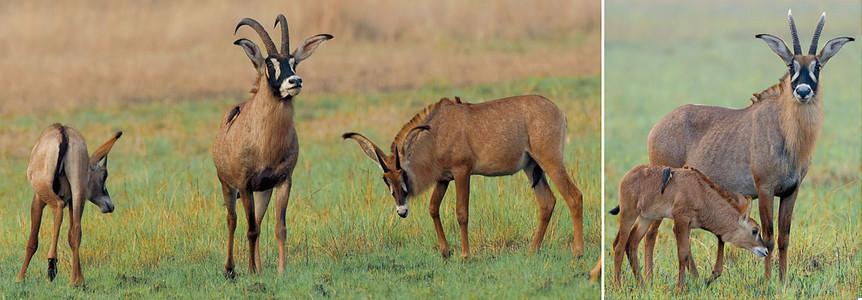
Roan Antelope
The big female Roan Antelope between 2 young females (L image); a juvenile with its mother (right image): the white tips on the mother's horns indicates that she is fully mature. [Busanga Plains, Zambia].
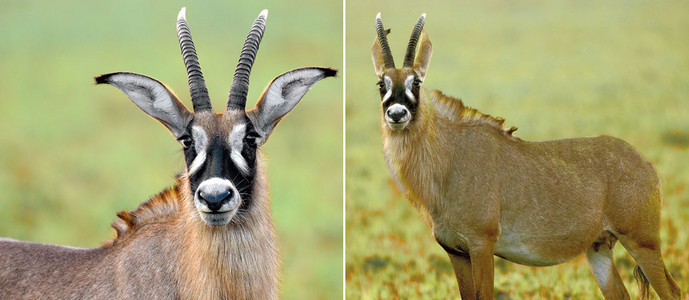
Roan Antelope
A closeup of the face (L); and full-body view of a mature female Roan Antelope. (R) (Double Image). [Busanga Plains, Zambia].
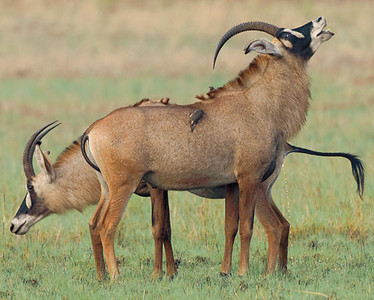
Roan Antelope
The male roan (front) is exhibiting flehman. Probably prompted by his scenting of the female's urine (behind). Flehman consists of opening the mouth widely, curling back the lips, and raising the head. This gesture is practiced by all species of mammals to enhance the olfactory sense. Animals use it to evaluate the breeding status of females. [Busanga Plains, Zambia].
